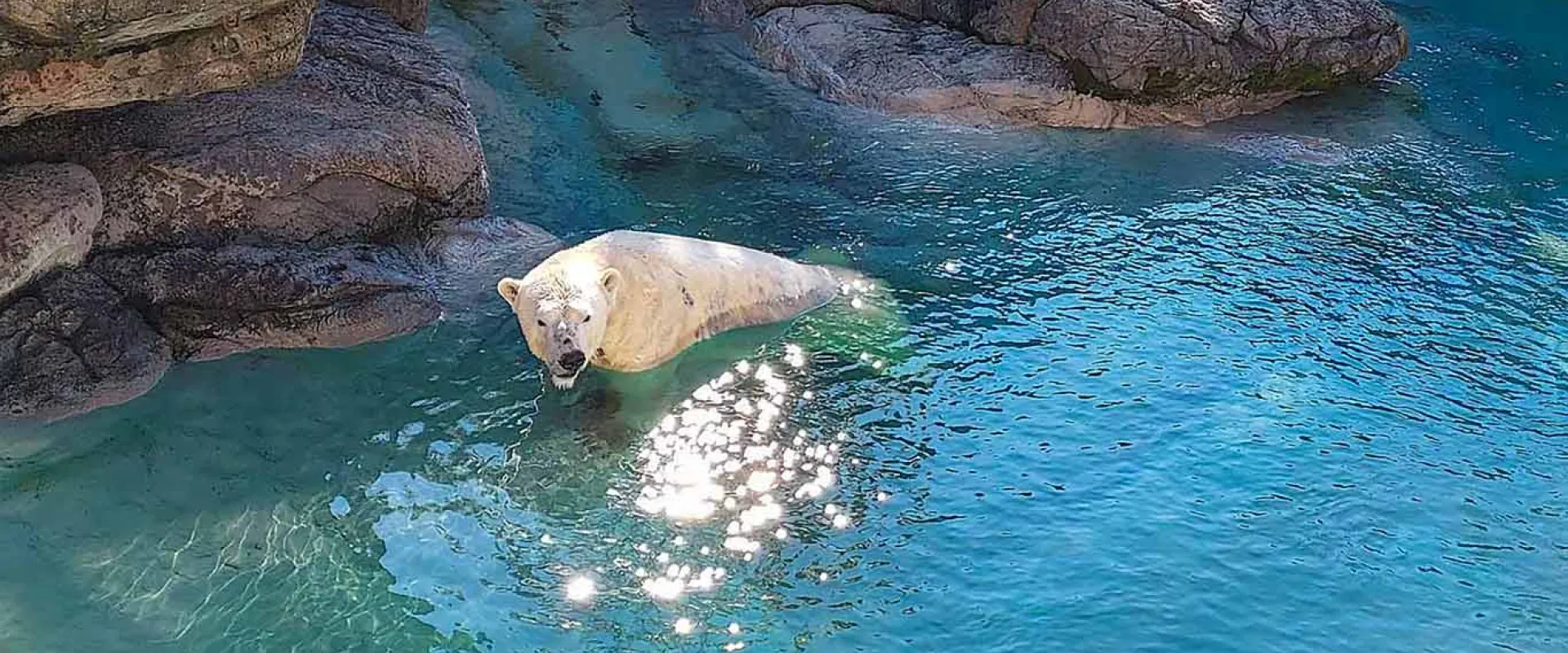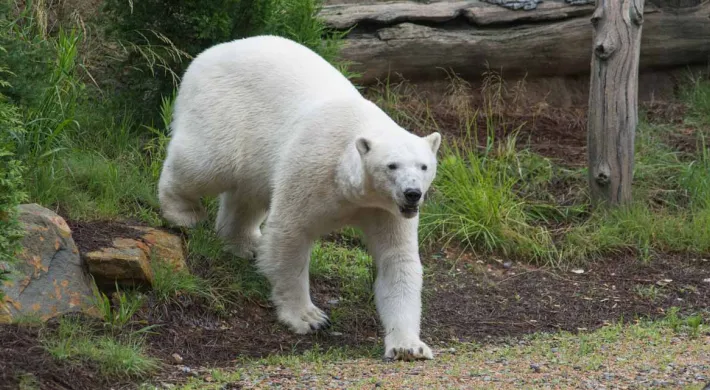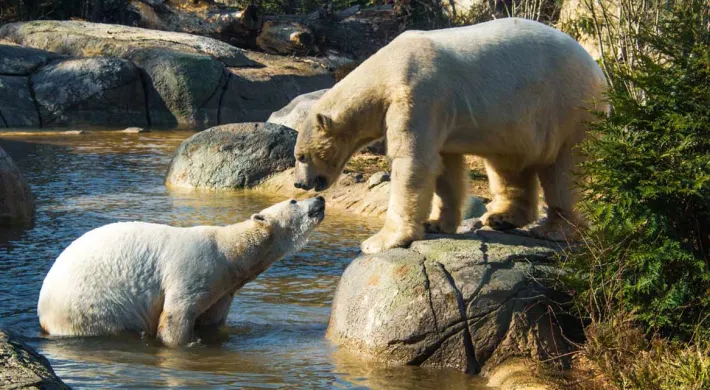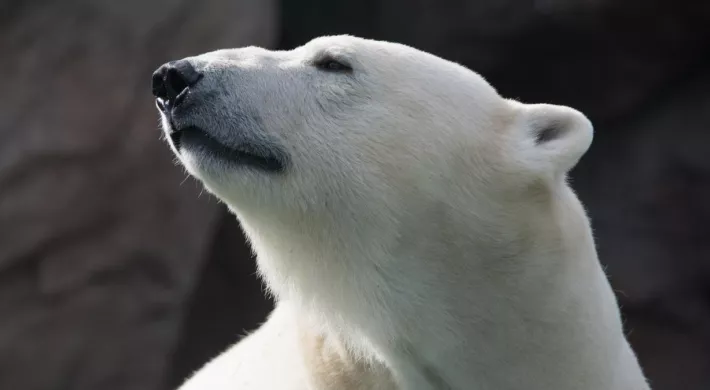Written by Kristi Marion, North Carolina Zoo Society
A year ago, the North Carolina Zoo welcomed Payton, a 1,000-pound male polar bear to its Rocky Coast habitat. Payton was born and grew up at the Brookfield Zoo in Chicago and named after the late Chicago Bears NFL team running back Walter Payton. Now 18 years old, he was relocated from the Memphis Zoo in Tennessee on the recommendation of the Association of Zoos and Aquariums’ (AZA) Species Survival Plan (SSP) last January in hopes that he and the Zoo’s female polar bear, Anana, might produce a cub.
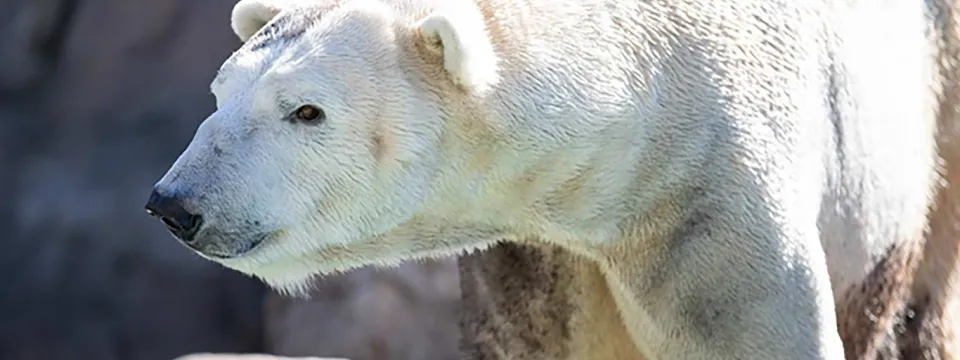
Payton’s keepers have enjoyed working with him and getting to know him over this past year. Keeper Kirsten Perkins described his personality as “derpy,” or goofy. “He easily gets excited about things. He has big ears, and they perk up when he’s excited, and his head starts bobbing up and down.”
He seems to enjoy playing with his enrichment items, including large plastic garbage cans perfect for a 1,000-pound polar bear. “He loves to put them on his head and fold them up into tiny pieces,” said Kirsten.
“And it’s good for him to practice this natural instinctive ‘crushing’ behavior,” said Keeper Melissa Vindigni.
Speaking of instinctual behavior, “We noticed that he seems to love how Kirsten smells,” explained Melissa. “Sometimes, we have her hug the enrichment items before we toss them to him.”
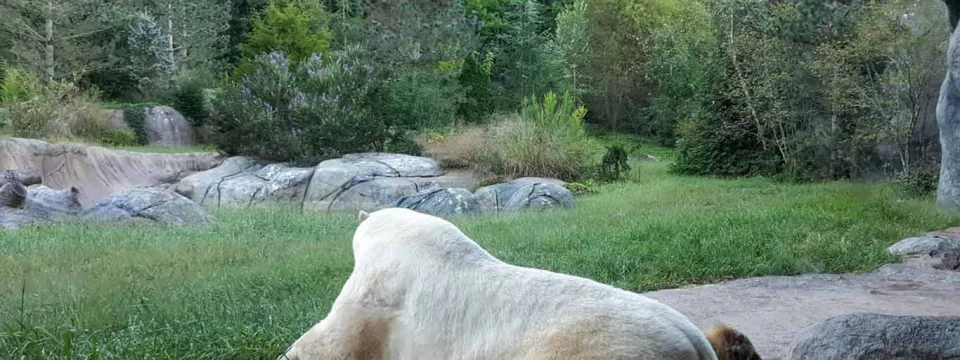
Polar bears have more olfactory nerve endings than other animals. Their brain is more dedicated to processing smells than its other senses. This excellent sense of smell is an evolutionary trait developed over thousands of years for survival. The polar bear's nose is so powerful it can smell a seal on the ice 20 miles away and sniff out a seal's den that has been covered with snow.
Payton seems to be even more in-tune with his sense of smell than other polar bears our keepers have worked with in the past. “We notice that his nose is always working,” said Keeper Melissa.
He seems to love forming relationships with keepers and eagerly participates in training sessions and one-on-one time with his keepers. “He’s good at making you feel special,” said Keeper Kirsten.
Both polar bear habitats have pools and streams chilled year-round to 50°F in the winter and around 63°F in the summer. During his time at the North Carolina Zoo, keepers have enjoyed watching him grow as a swimmer.
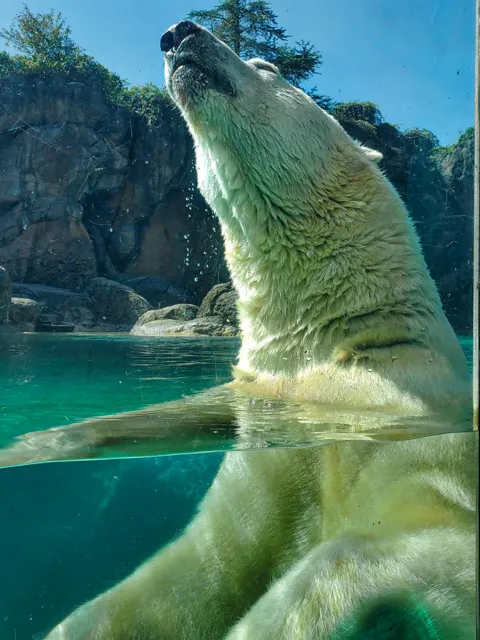
Payton enjoying a swim!
Keeper Melissa noted that his pool here at the North Carolina Zoo is deeper with more depth features than he was accustomed to at other zoos, so it has been a discovery process. It's been amazing watching him come out of his shell and swim more and more.”
When Payton was first introduced to the Zoo’s 147,000 gallons pool, he’d like to hold onto the edge, much like a child learning to swim. Now, keepers say he’ll dive right in you toss something into the water. “Sometimes, he’ll find a perch for his front feet and take a nap in the pool,” said the keepers.
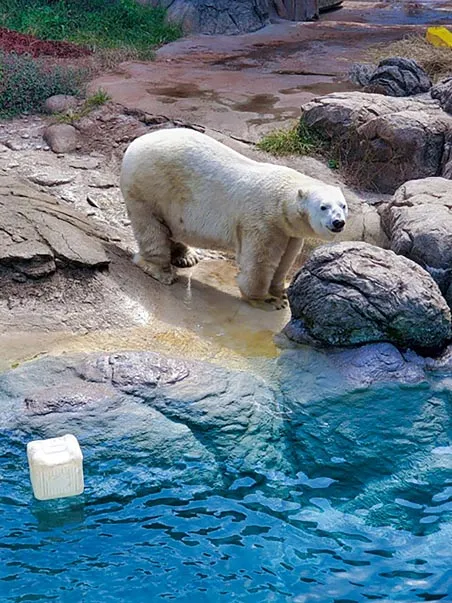
Payton dipped his toes in the pool
Polar Bear Mating Season - Together Again?
Polar bear mating season generally runs from February through March in the wild. Payton is being slowly introduced to the Zoo’s 22-year-old female polar bear Anana. She is roughly half his size at 600 pounds.
In the wild, polar bears live an average of 15 to 18 years, although biologists have tagged a few bears in their early 30s. Under human care, bears can reach their mid-30s.
Neither of the bears has sired cubs. At the Memphis Zoo, Payton was paired with another female (who happens to be Amana’s sister!) during mating seasons, but breeding was unsuccessful. North Carolina Zoo's keepers are hoping they will take to each other and produce cubs.
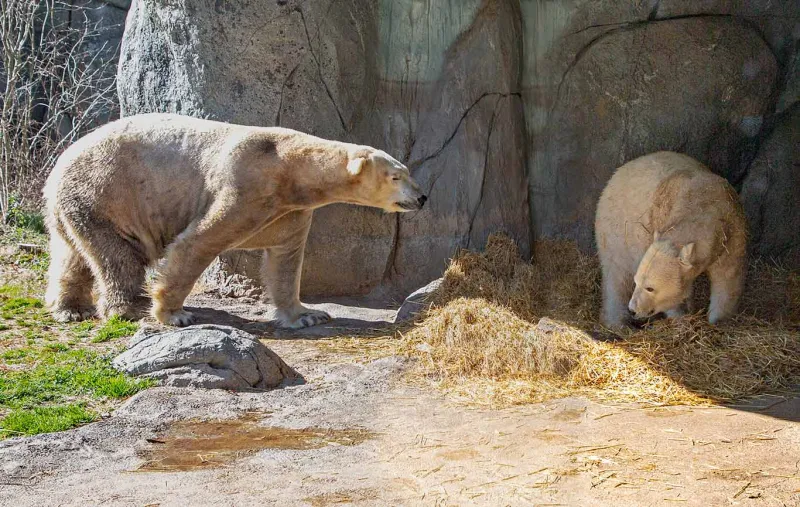
Payton & Anana
Payton is showing some interest in Anana, but both are being very cautious about their introduction. “It’s developing day-by-day. They’re both taking their time. Blind dating is rough,” said Keeper Melissa. “It’s a lot like online dating. He doesn’t look like his picture, and it’s a little awkward at first.”
Usually living in separate habitats at the North Carolina Zoo, the bears will be paired together during mating season (replicating the behavior of wild polar bears) anywhere from February to April. Keepers are easing them into the courtship, so this timing is flexible. Be sure to visit them during this time, and you might see them together!
Polar Bear Survival
The North Carolina Zoo is among an elite group of 40 zoos, aquariums, and museums that are Arctic Ambassador Centers (AAC) through a partnership with Polar Bears International (PBI). PBI is the leading conservation group in the world that works to conserve polar bears.
Polar bears, native to North America, are listed as vulnerable on the International Union for Conservation of Nature Red List of Threatened Species. There are an estimated 22,000-31,000 in the wild, and polar bear numbers are projected to decline by 30% by 2050.
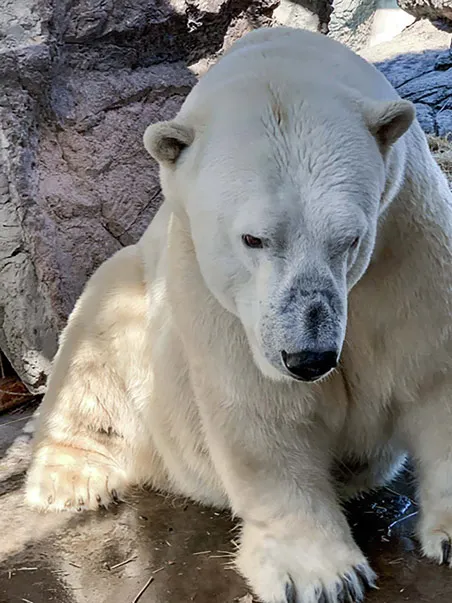
Payton is a sleepy boy!
Polar bears are at the top of the food chain in the Arctic. The only threats to polar bears are humans, other polar bears, and climate change as the species struggles to survive.
Polar bears are dependent on the sea ice, which is hunting grounds for their primary prey – seals. With less sea ice each season, polar bears are left with a shortened hunting season and less food for survival.
Adopt a Polar Bear!
February 27, 2022, is International Polar Bear Day. To “adopt” Payton and/or Anana and support their care at the North Carolina Zoo, visit nczoosocietystore.com/adopt-a-polar-bear.
For more information about polar bears and how you can help save them, visit polarbearsinternational.org
